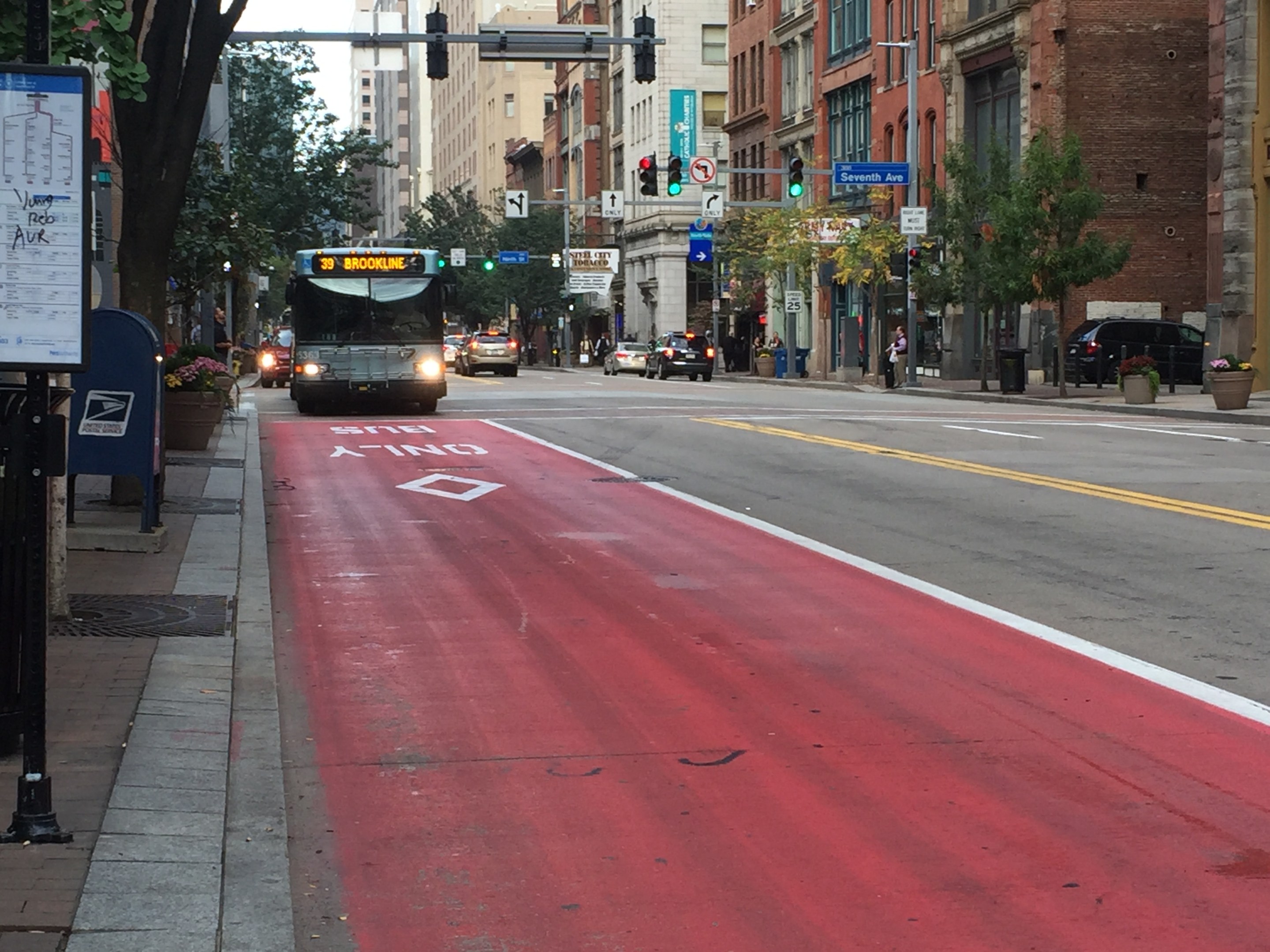This story was original published by Mobility Lab. It is reprinted here under a content-sharing agreement.
Bus-only lanes are one of the most effective ways to improve bus service. However, they do no good if constantly impinged on by traffic, as happened with Washington, DC’s recent experiment with a priority bus lane to replace a shut-down portion of Metrorail. This largely failed when “parked cars freely blocked the right of way” while trucks “weaved in and out of traffic” according to the Washington Post.
The good news: enforcement is relatively easy and at little cost. We just have to actually do it.
A 2017 report from the National Capital Region Planning Board found that enforcement cameras mounted to the front of buses are the most effective tool. These cameras help levy hefty fines on people driving who violate the bus-only lane—usually around $200 or $250.
A benefit-cost analysis reveals that painting a white line on the pavement to denote the bus-only lanes coupled with bus mounted cameras has the highest return on investment, with $1 invested returning nearly $8 in “travel time savings and fleet saving benefits,” according to the report.
The next best option — painted white lines with stationary cameras mounted on traffic lights — plummets to a return on investment of $1 yielding $5 in benefits.
Yet the two most common enforcement strategies – police enforcement and red paint – are the most expensive and offer the least benefit. This is because police enforcement is much more expensive than enforcement cameras and because red paint costs an astonishing $308,000 per mile to install.
The report also details important steps jurisdictions should take before and after implementing a bus-only lane to ensure that it runs smoothly.
Since different government agencies design the bus lane, run the bus, and enforce the law, interagency cooperation is critical from the beginning. The report therefore calls for “cooperation between state, regional, and local agencies, and between traffic engineering and transit service planning officials, at all phases of implementation.” Because legislation is often needed to allow cameras and enforcement, early action from local and/or state lawmakers is important.
An educational campaign is also crucial, beginning prior to implementation — for instance via informational pamphlets — and continuing throughout, such as in changes to driver manuals. It’s important for drivers to know the rules of the bus lanes, like which lanes may allow right turns for automobiles. And targeted police enforcement is important during the first few weeks of any plan to make sure it gets off to a smooth start.
Once the plan is up and running, continuous monitoring is needed to make sure that cars and other vehicles stay away from bus lanes and buses make good time. Repeat offenders in particular must be dealt with, since these individuals are likely willful violators, rather than simply making errors. The report mentions the possibility of points on a driver’s license as an additional deterrent.
Another aspect of enforcement, left out of the report, is that fines of $200, while onerous for most people, can be easily laughed off by wealthy individuals. A growing body of scholarship is showing how fines particularly hit low-income individuals, often resulting in incarceration and a cycle of failure. Jurisdictions therefore might want to consider community service as an option that deters people of all income levels equally.
Finally, of course, every jurisdiction has individual circumstances that call for flexibility. For instance, DC already has many stationary cameras in place, as we mentioned in a recent article, so perhaps the city could use those in enforcement and install cameras on buses only as needed. On the other hand, the report does suggest red paint as an option for bus lanes with low enforcement. So the formula of bus-mounted cameras and white stripes will not necessarily be the best in every situation.
Currently, DC’s bus service is mired in traffic, with “average speeds reaching less than 10 miles per hour on most corridors and less than five miles per hour in downtown D.C. during peak periods” according to the report. New York City and San Francisco, meanwhile, are the flagship cities that have implemented bus-only lanes with strong enforcement mechanisms.
We know how to implement bus-only lanes. “It comes down to whether jurisdictions are truly invested” in transit, Pete Tomao of the Coalition for Smarter Growth told me. It’s time for DC to overcome its timidity and take serious action. Indeed, cities across the country should be taking advantage of bus-only lanes to alleviate traffic and help the environment.






